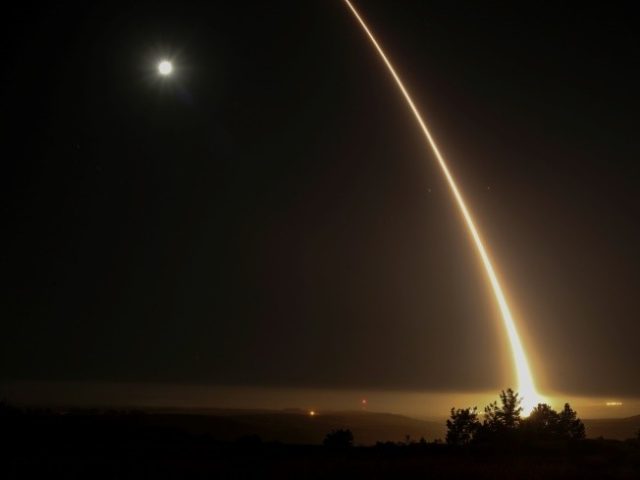Pentagon officials said on Friday that next week will mark the first attempt to shoot down an intercontinental ballistic missile in flight, closely simulating a North Korean attack on the United States.
The Associated Press notes that missile intercept technology has a “spotty track record,” having succeeded in just 9 of 17 attempts since 1999. Previous tests have involved shorter-range missiles, not an intercontinental ballistic missile. ICBMs pass through space en route to their targets. The difficulty of keeping the warhead intact upon reentry to Earth’s atmosphere is one of the hurdles North Korean scientists have not yet been able to overcome.
“The most recent test, in June 2014, was a success, but that followed three straight failures,” the AP recalls.
The system, known as Ground-Based Midcourse Defense (GMD), has been notoriously compared to “hitting a bullet with a bullet.” More precisely, it involves hitting a rocket with a rocket that launches another rocket.
“An interceptor is to be launched from an underground silo at Vandenberg Air Force Base in California and soar toward the target, which will be fired from a test range on Kwajalein Atoll in the Pacific. If all goes as planned, the ‘kill vehicle’ will slam into the ICBM-like target’s mock warhead high over the Pacific Ocean,” the AP writes.
Officials said the test target would be moving much faster than targets from previous intercept tests, to better simulate the challenge of hitting an inbound ICBM. However, the target is not meant to precisely simulate any specific model of North Korean missile.
Although Reuters quotes recent remarks from U.S. intelligence officials that indicate “mounting concern about Pyongyang’s advancing missile and nuclear weapons programs,” it notes that next week’s intercept test was “planned well in advance and was not in reaction to any specific event.”
The U.S. has a total of 36 interceptor missiles ready to fire, and plans to build 8 more during the coming year, but no such defensive weapon has ever been used in actual combat conditions. Skeptics say even those sporadic test successes involved simulated targets that were much less challenging than an actual enemy missile would be.

COMMENTS
Please let us know if you're having issues with commenting.